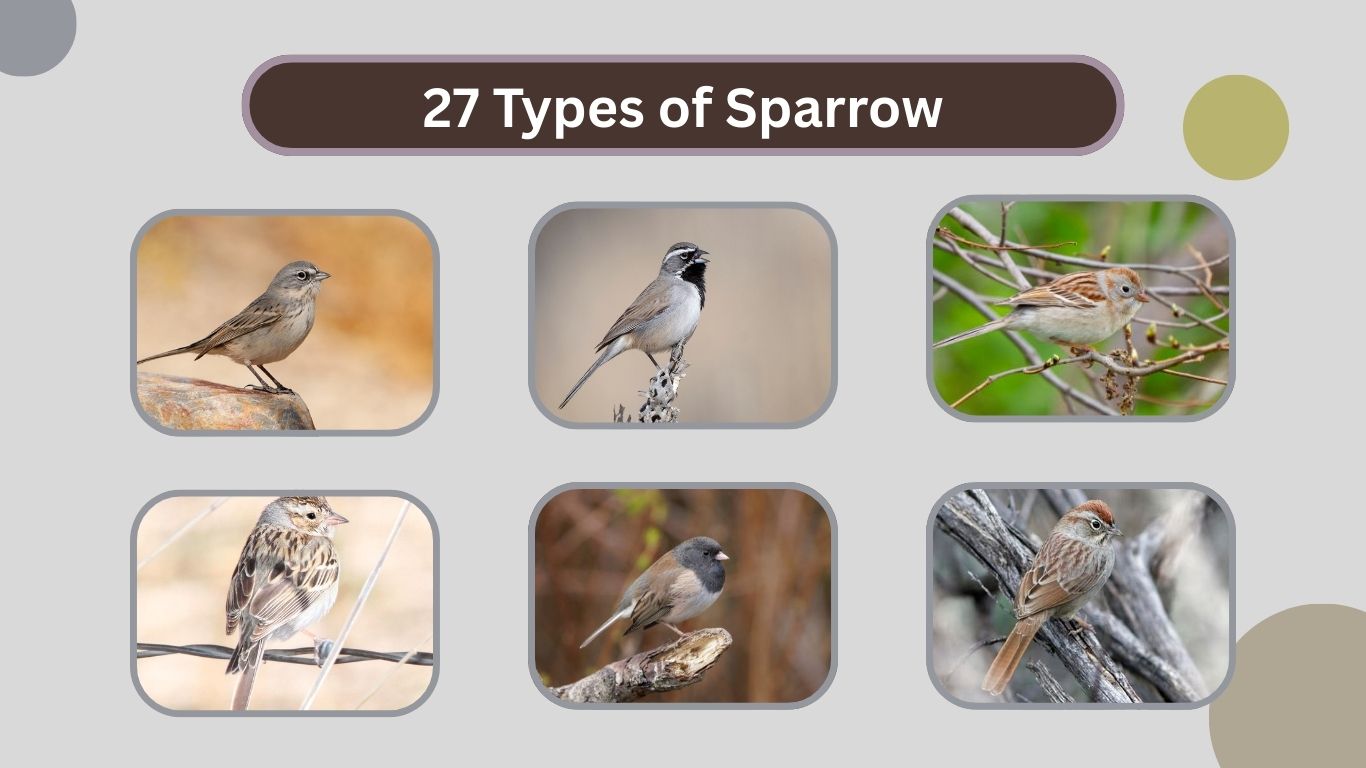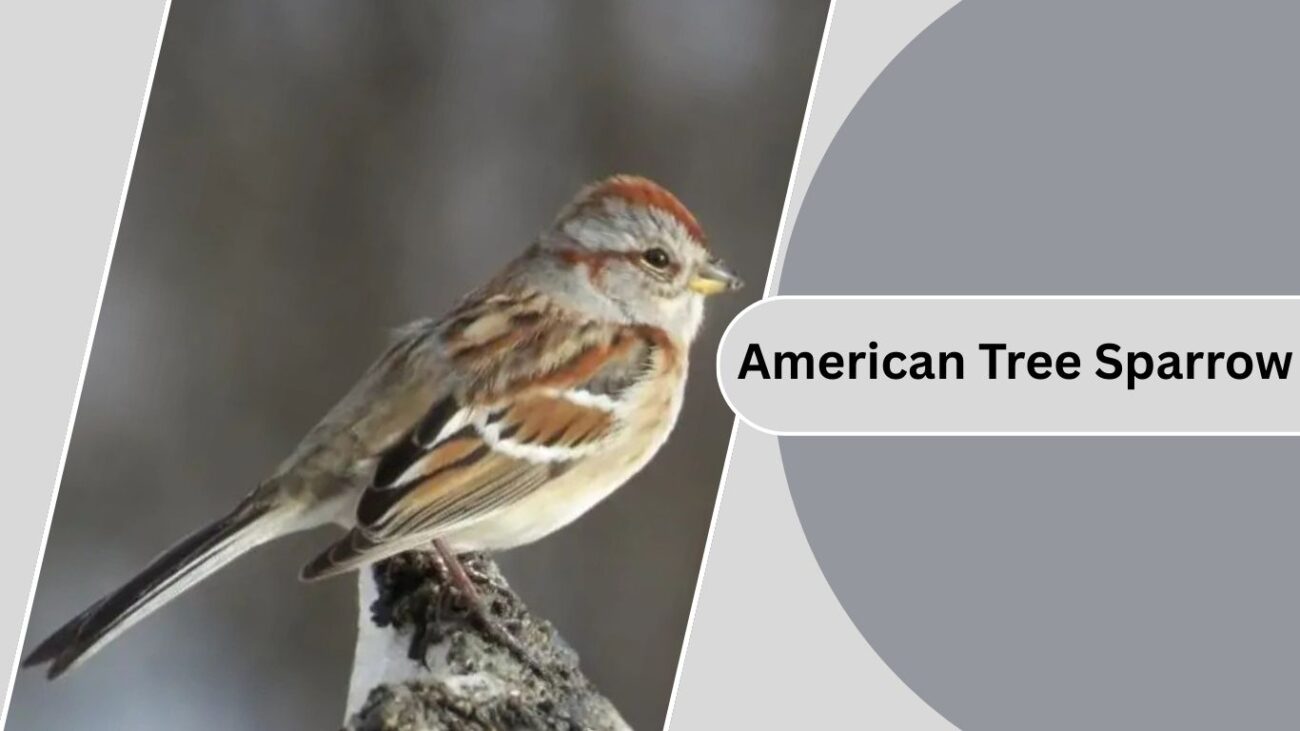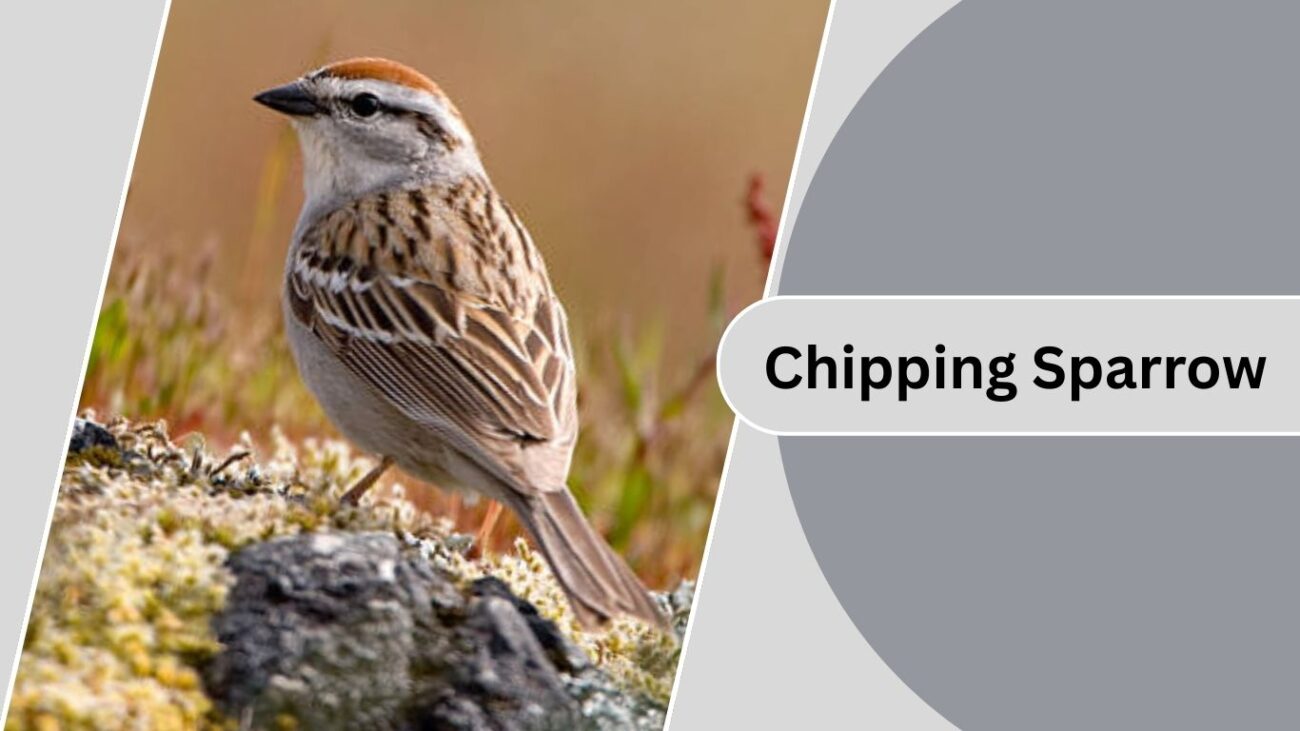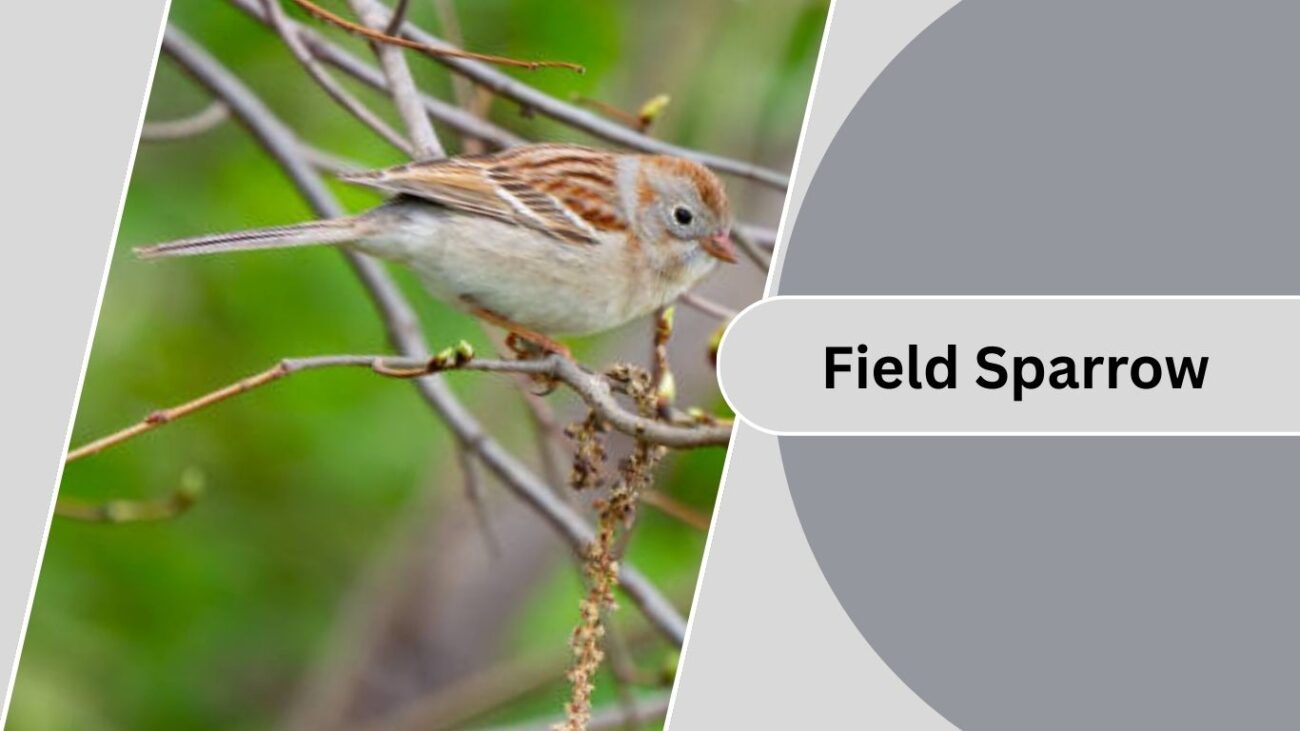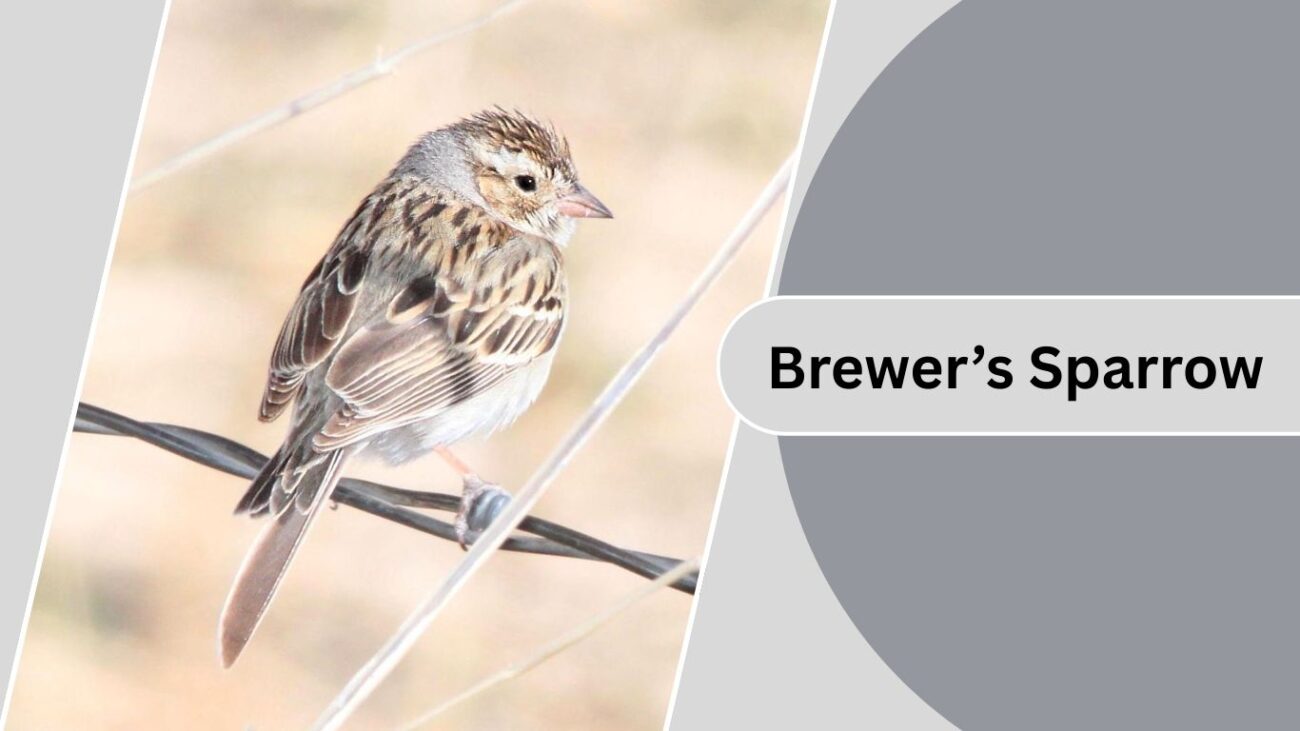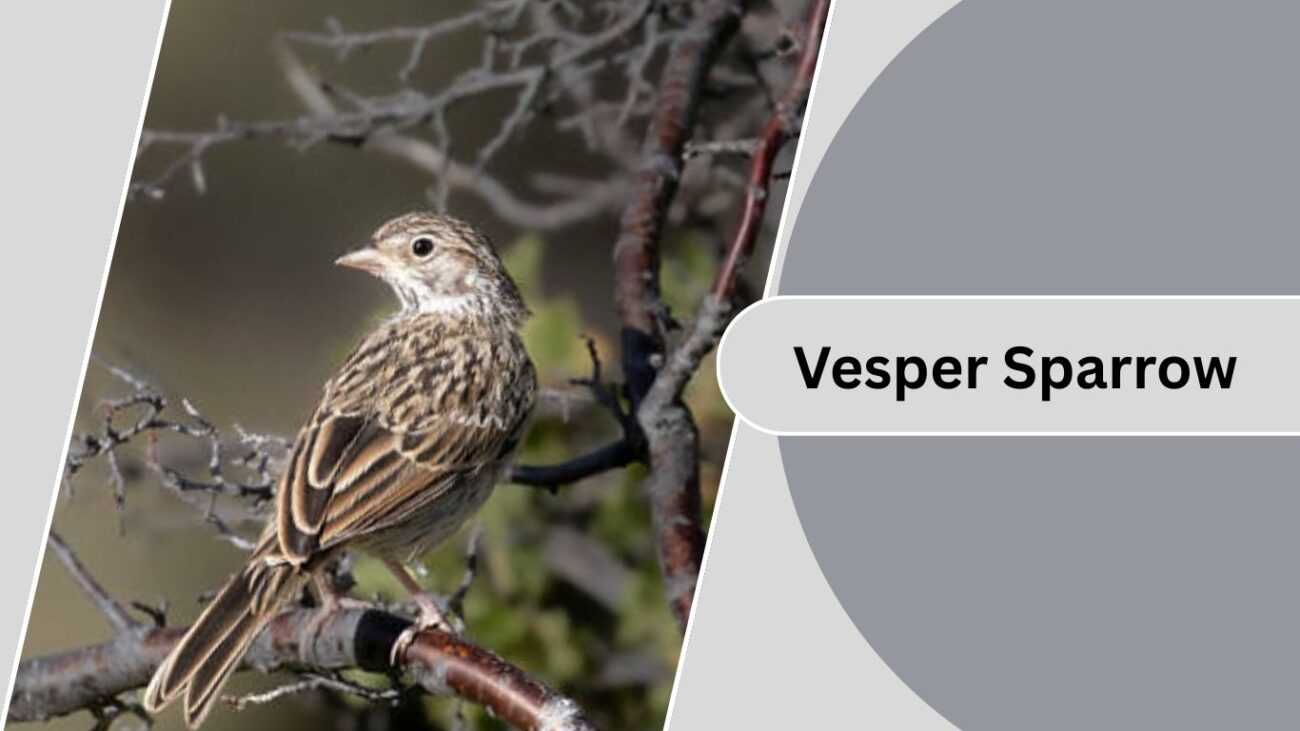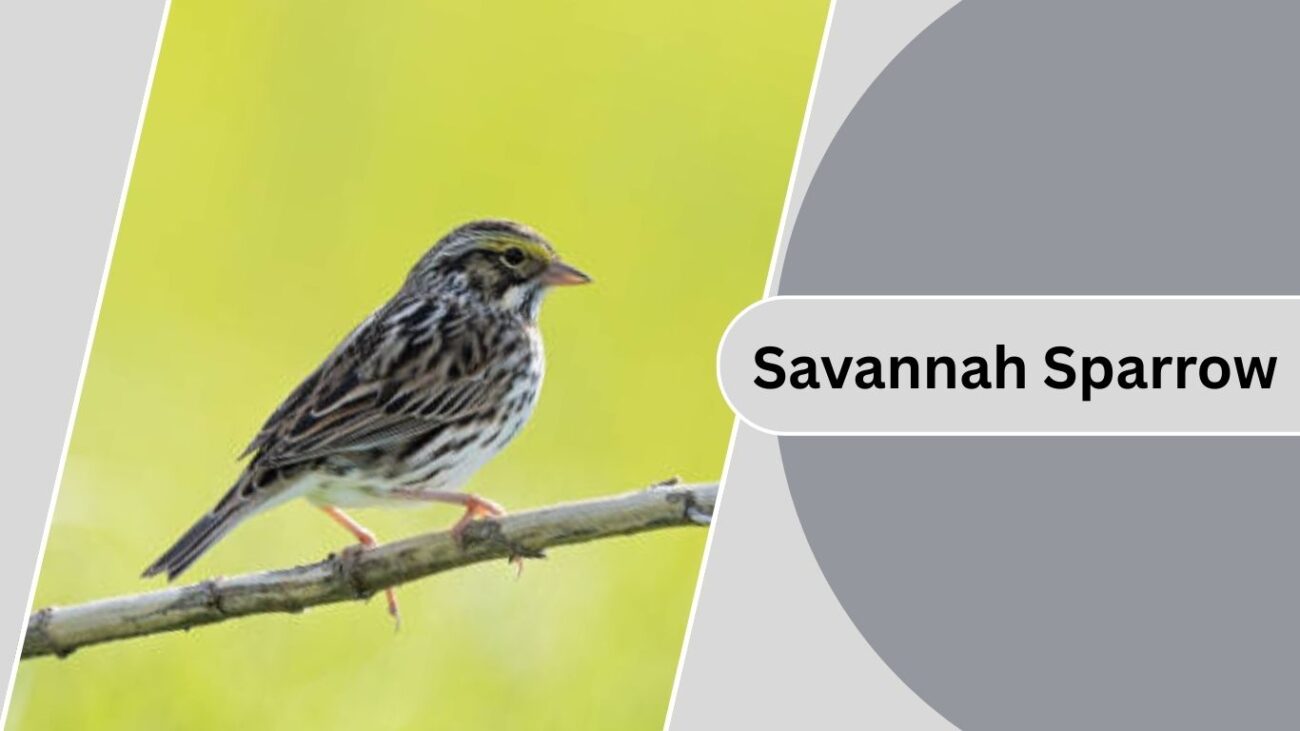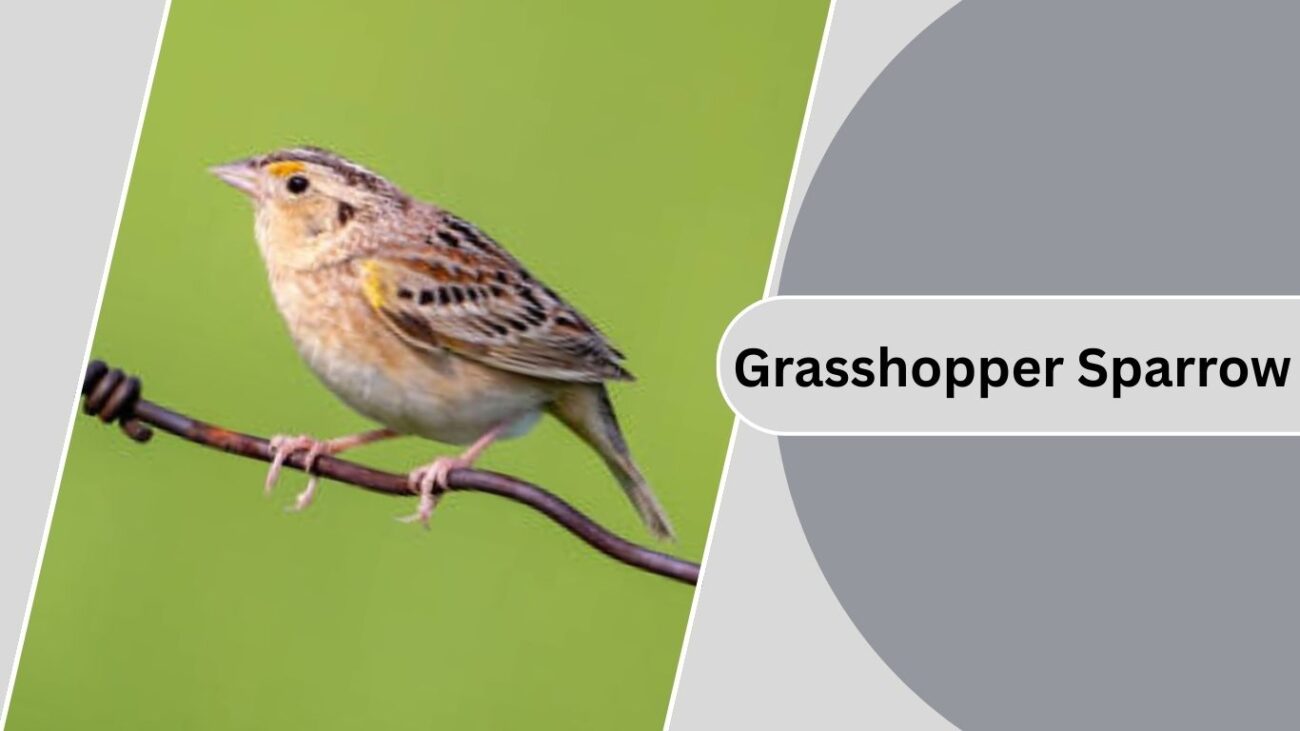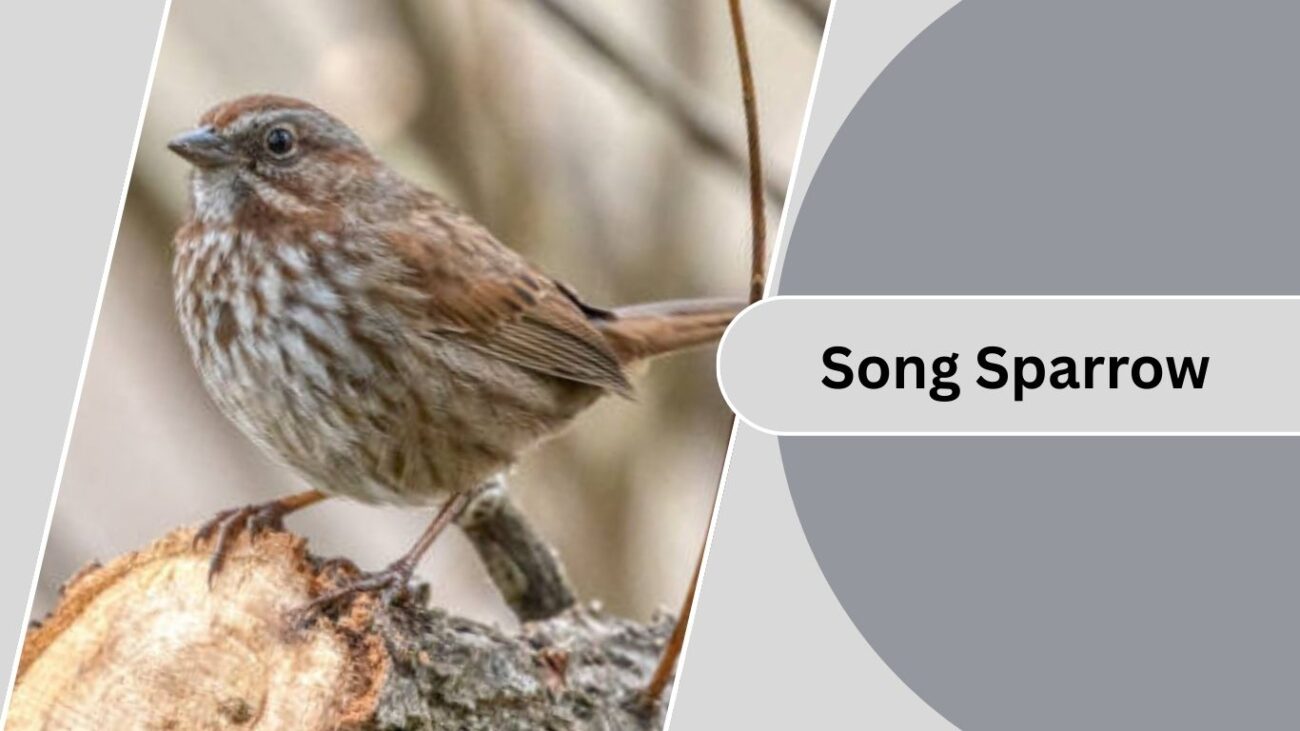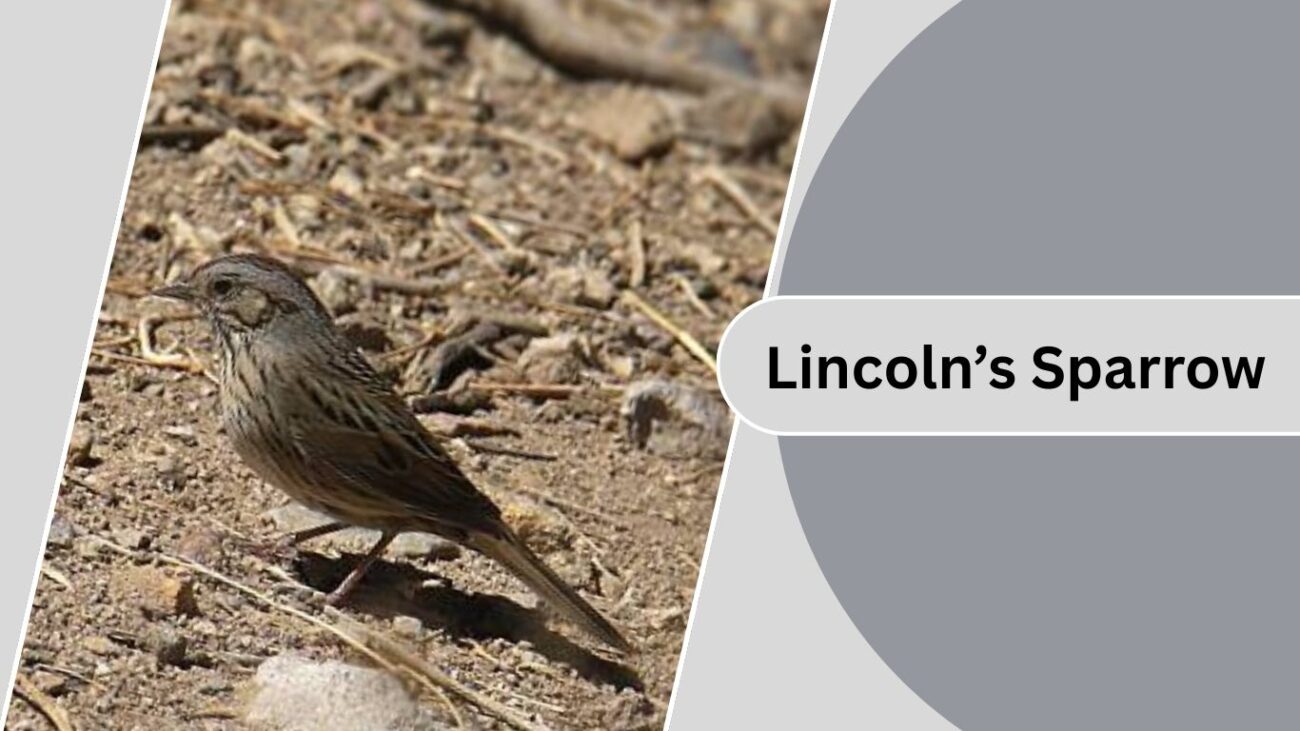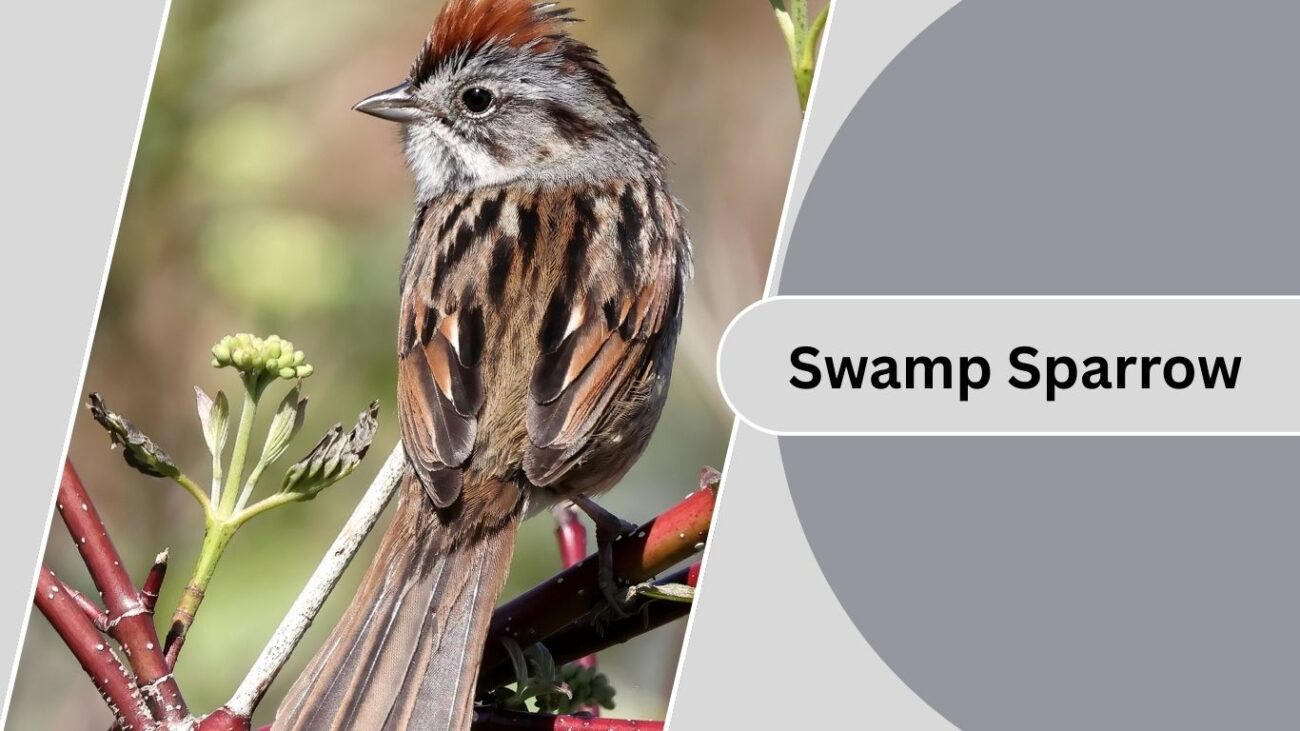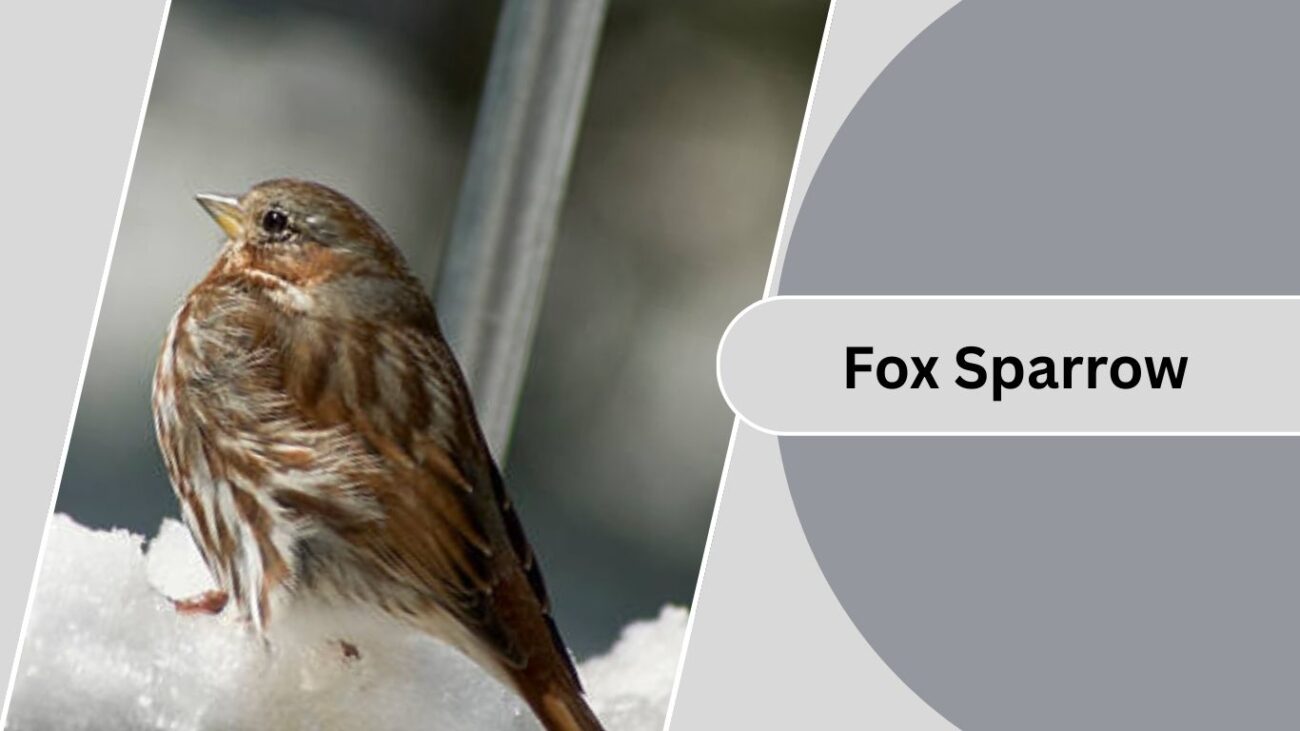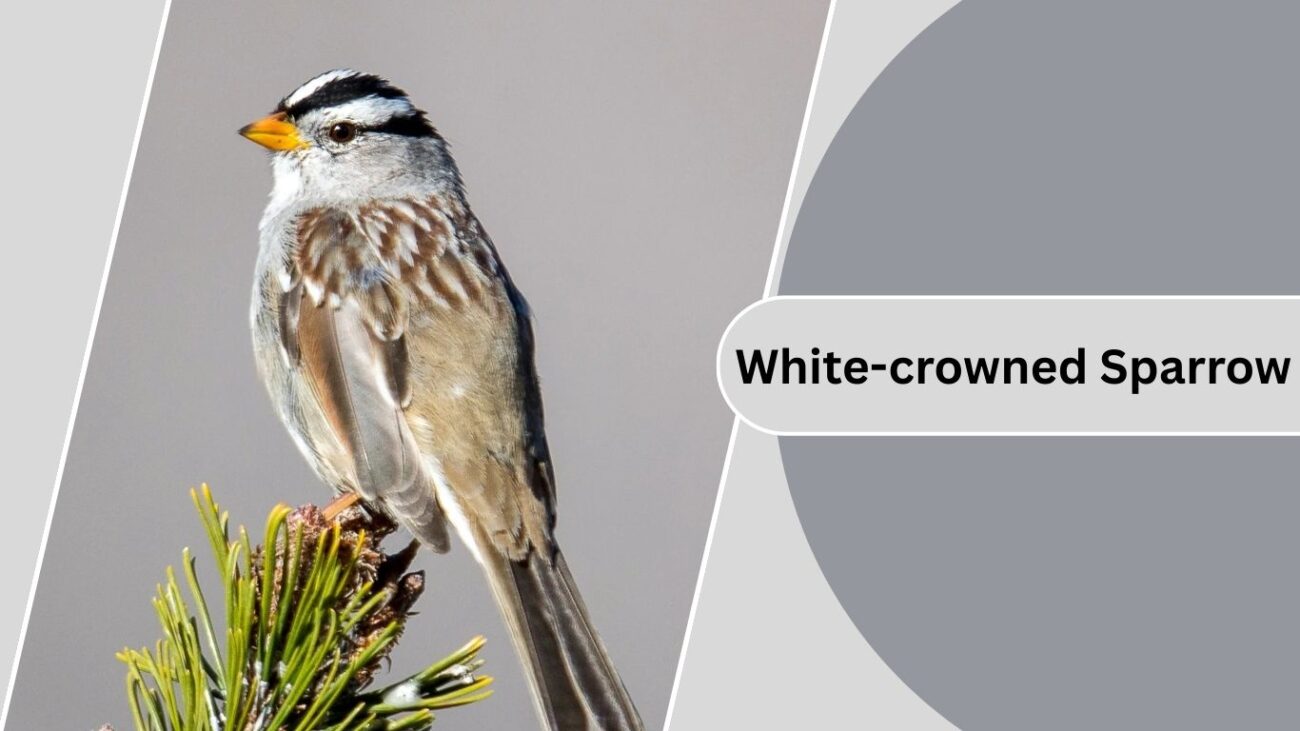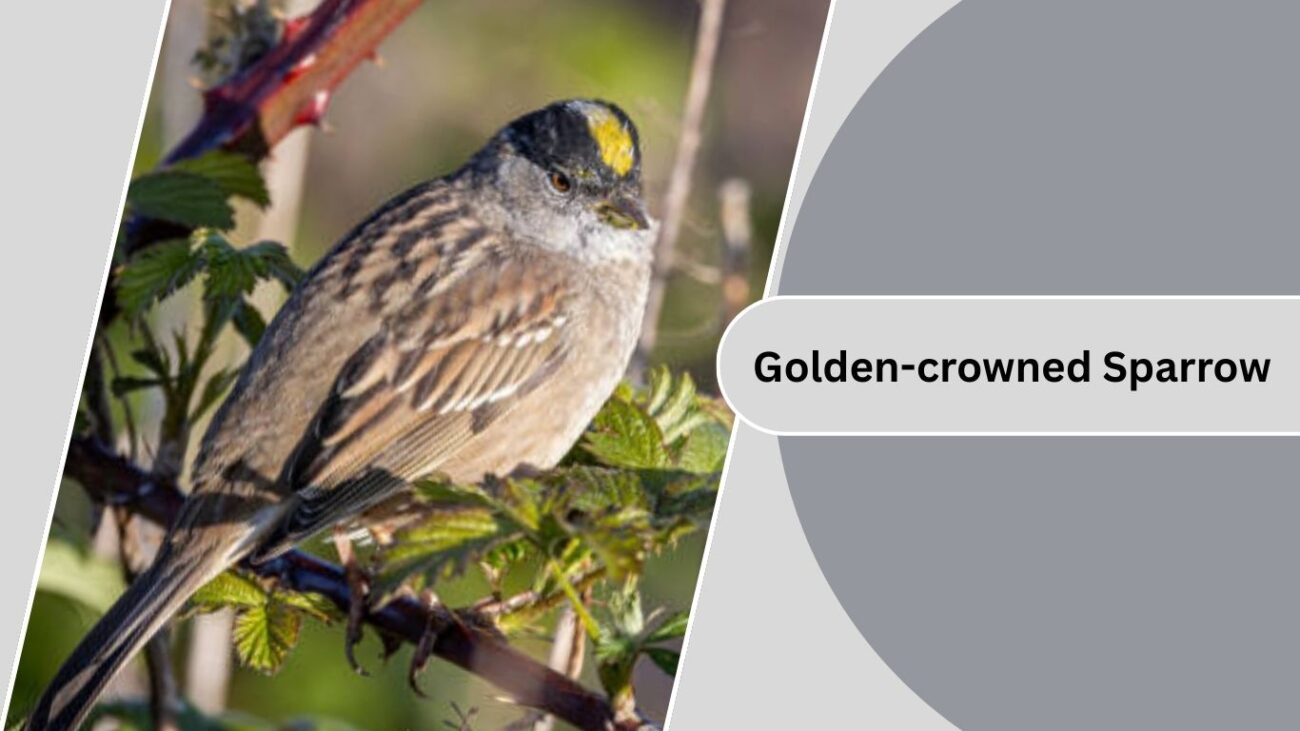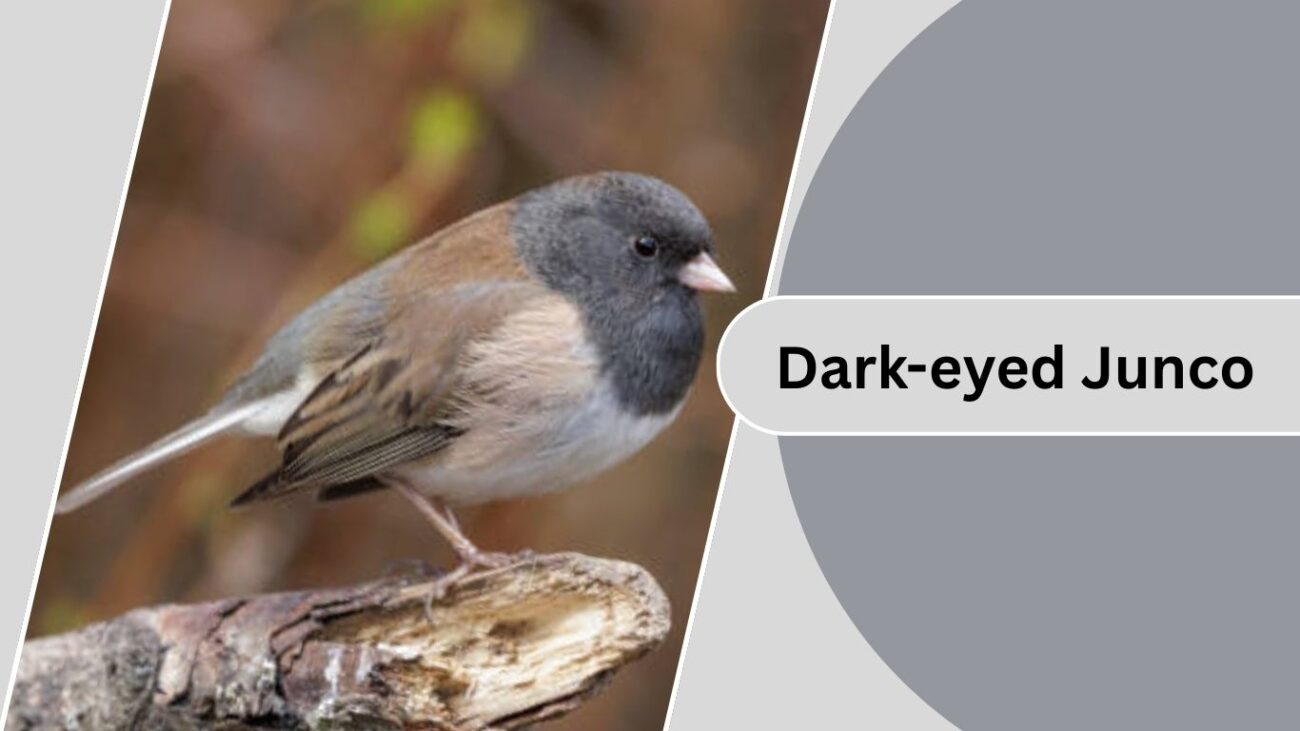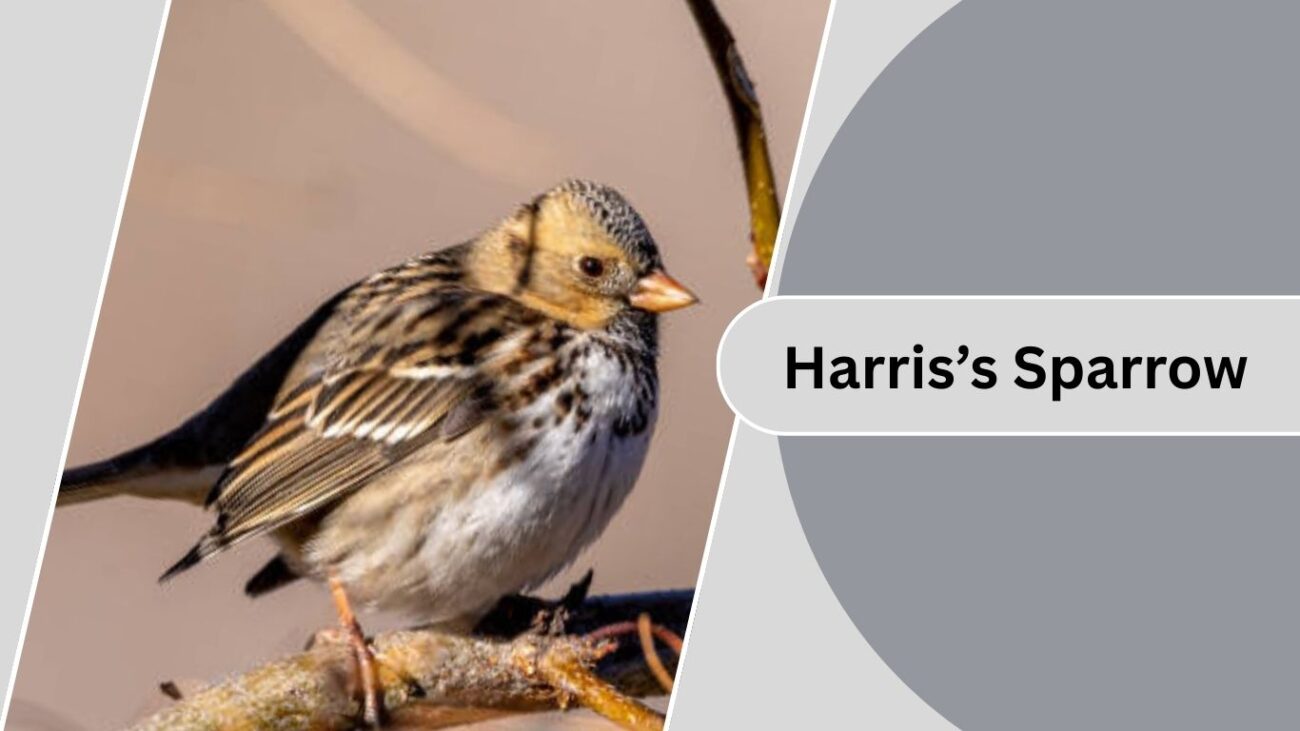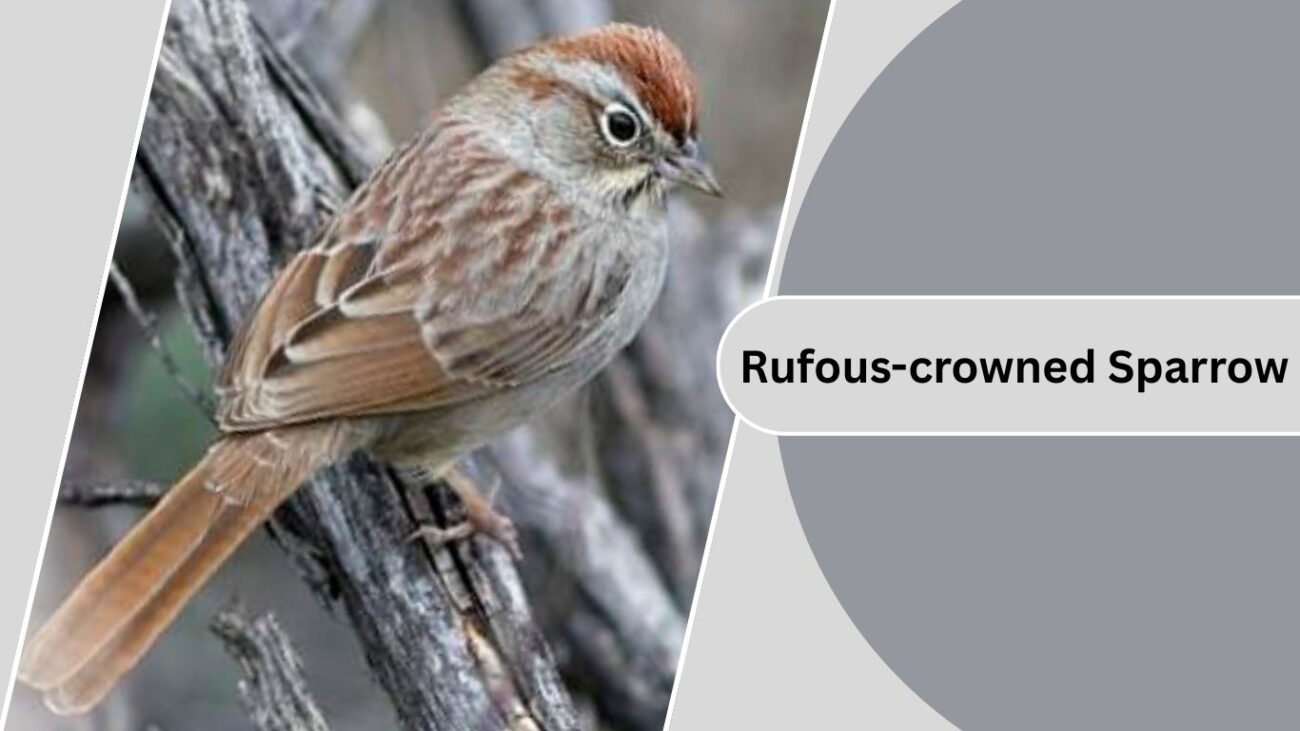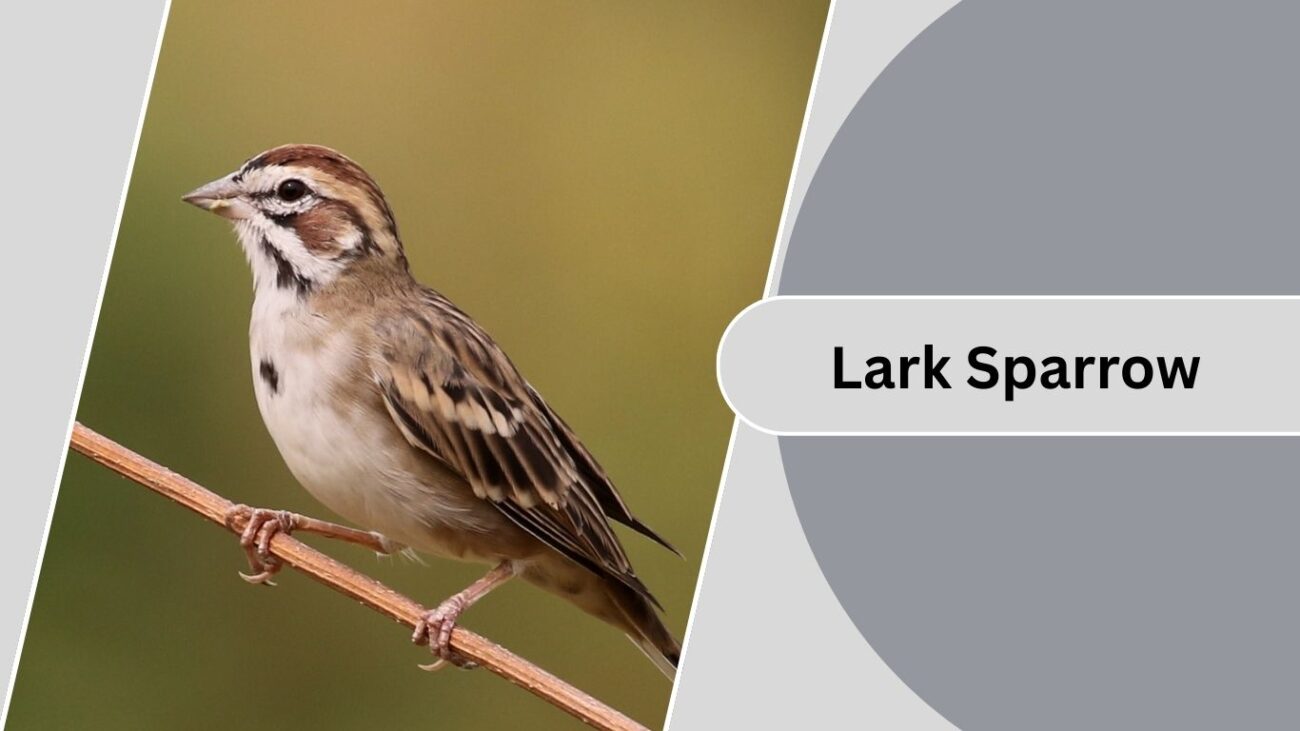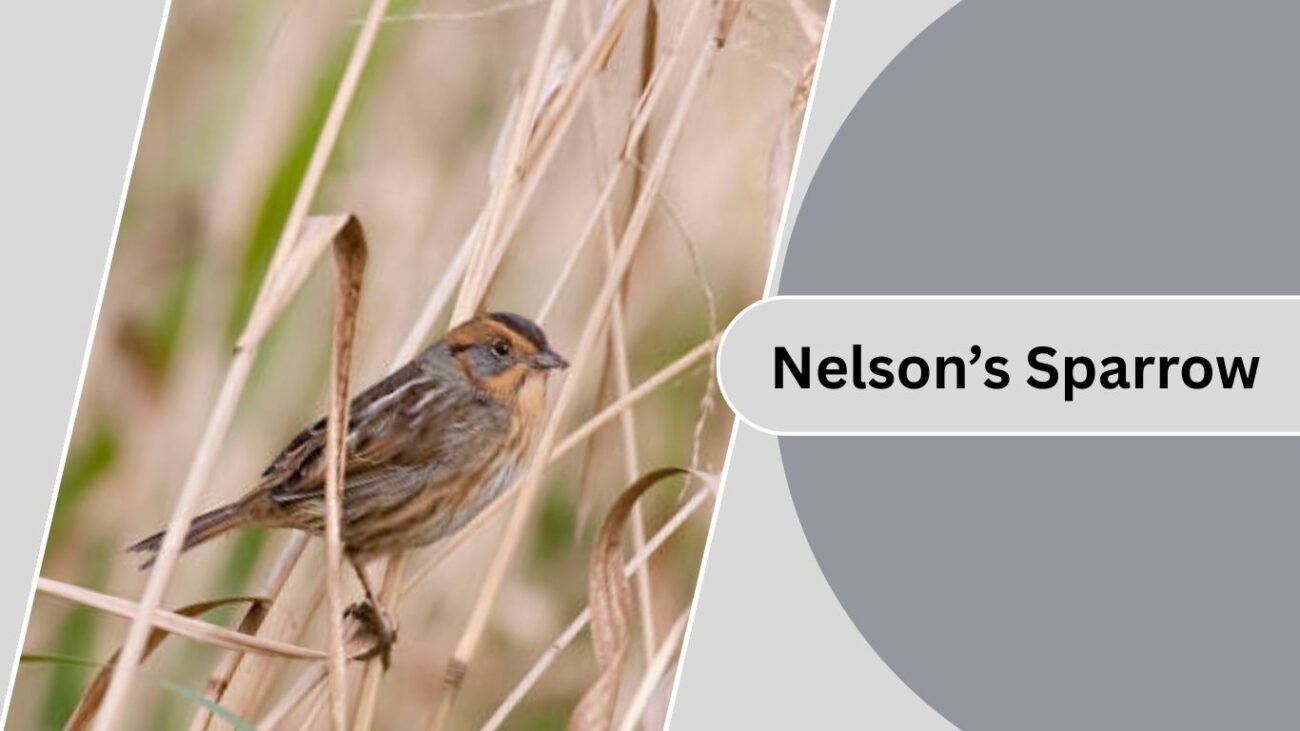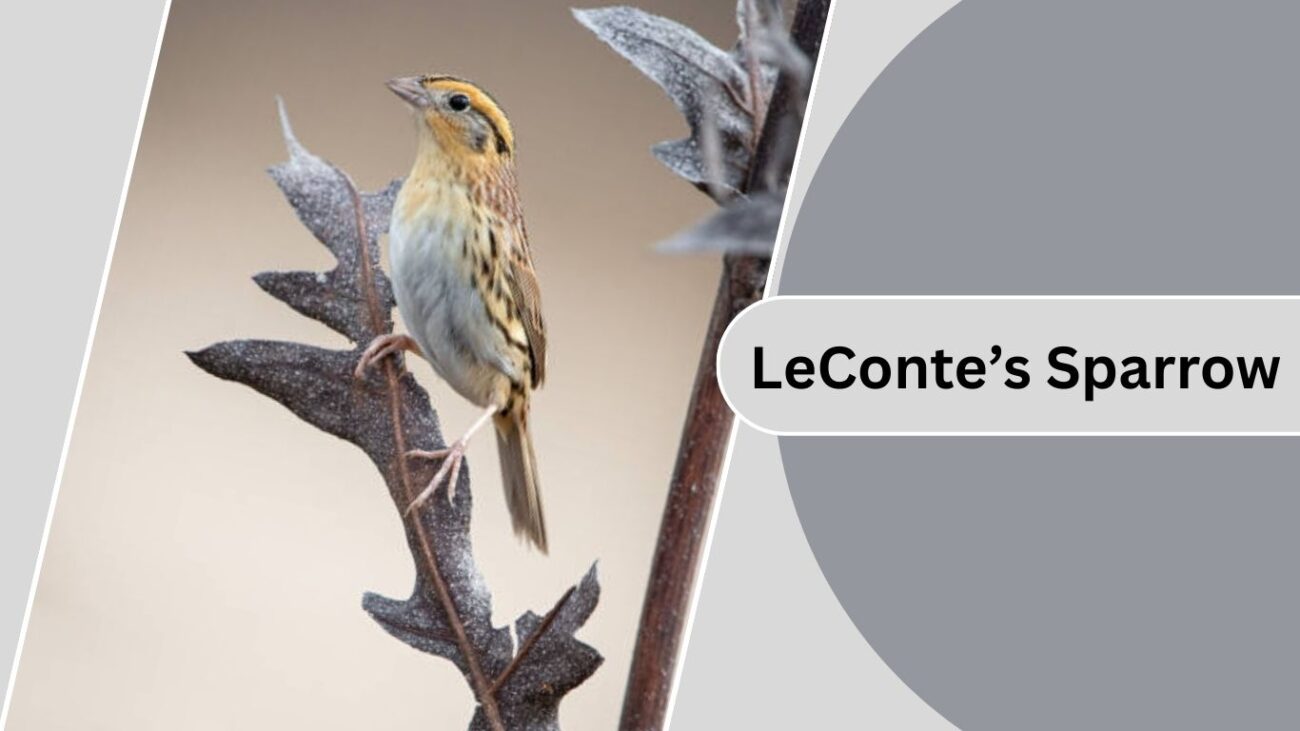Sparrows are a diverse group of small, adaptable birds found in a variety of habitats across North America and beyond. While many share similar behaviors and diets, each species has distinct markings, songs, and environmental preferences. From grassland specialists to marsh dwellers, this guide covers 27 types of sparrows, highlighting their identification traits, habitats, and behaviors so bird enthusiasts can better recognize and appreciate these charming songbirds.
1. House Sparrow
The house sparrow is one of the most widely recognized and adaptable bird species in the world. Commonly found in cities, towns, and rural settlements, these small birds have adapted exceptionally well to living near humans. They are known for their social behavior, energetic chirps, and ability to thrive in diverse environments, from bustling urban streets to quiet countryside barns.
Identification
- Scientific Name: Passer domesticus
- Body Size: 14–18 cm in length
- Color (Male): Gray crown, black bib, chestnut nape, and gray underparts
- Color (Female): Brown and buff overall with streaked backs, no black bib
- Beak: Short and stout, yellowish in non-breeding season, black in breeding males
Habitat and Distribution
House sparrows are native to Europe, Asia, and parts of North Africa but have been introduced to the Americas, Australia, and New Zealand. They thrive in human-dominated landscapes such as farms, gardens, city parks, and residential areas.
Behavior and Diet
Highly social and often found in flocks, house sparrows feed mainly on grains, seeds, and food scraps, but will also consume insects—especially during the breeding season to feed their young. Their close association with humans has made them both beloved and, in some regions, considered a nuisance.
2. Eurasian Tree Sparrow
The Eurasian tree sparrow is a small, social bird often confused with the house sparrow but distinguishable by its unique markings. It is common in rural areas, farmlands, and wooded edges, although it can also be seen in parks and gardens. These sparrows are less urbanized than house sparrows and are more likely to nest in natural tree cavities or birdhouses.
Identification
- Scientific Name: Passer montanus
- Body Size: 12.5–14 cm in length
- Color (Both Sexes): Chestnut-brown crown, black throat patch, white cheeks with a distinctive black cheek spot
- Beak: Short and conical, dark in breeding season
- Wings & Back: Brown with black streaks
Habitat and Distribution
Native to Europe and much of Asia, the Eurasian tree sparrow has also been introduced to parts of North America and Southeast Asia. It prefers open countryside, farmland edges, orchards, and villages with nearby trees for nesting.
Behavior and Diet
These birds are active foragers, feeding on seeds, grains, berries, and small insects. They are often seen in small flocks outside the breeding season and are known for their fast, fluttery flight. Unlike house sparrows, they are shyer around humans but still benefit from farmland and garden habitats.
3. American Tree Sparrow
The American tree sparrow is a hardy, cold-weather bird that breeds in the far northern regions and migrates southward during winter. Despite its name, it is not particularly associated with trees; instead, it is more often seen in open fields, meadows, and weedy edges. Its cheerful chirps and distinctive plumage make it a welcome sight in winter landscapes.
Identification
- Scientific Name: Spizelloides arborea
- Body Size: 14–16 cm in length
- Color: Gray face and chest, rusty-brown cap, and a dark central breast spot
- Beak: Bicolored — yellow lower mandible and dark upper mandible
- Wings & Back: Streaked brown with rusty tones
Habitat and Distribution
Breeding primarily in the tundra and northern boreal forests of Canada and Alaska, American tree sparrows migrate to the central and southern United States during winter. They favor open habitats with low vegetation, including prairies, fields, and roadsides.
Behavior and Diet
These sparrows forage on the ground for seeds from grasses and weeds, supplementing their diet with insects during summer. In winter, they often join mixed-species flocks, feeding energetically and even visiting backyard feeders stocked with millet or sunflower seeds.
4. Chipping Sparrow
The chipping sparrow is a small, energetic bird easily recognized by its crisp colors and cheerful trills. Common in open woodlands, parks, and suburban gardens, this species is especially noticeable during spring and summer when its breeding plumage becomes most vibrant.
Identification
- Scientific Name: Spizella passerina
- Body Size: 12–14 cm in length
- Color (Breeding): Bright rufous crown, white eyebrow, black eye line, and clean gray breast
- Color (Non-breeding): Crown becomes duller brown with streaks, overall paler appearance
- Beak: Short, thin, and dark
Habitat and Distribution
Chipping sparrows breed across much of North America, from Canada to the southern United States, and migrate to the southern U.S., Mexico, and Central America in winter. They prefer open areas with scattered trees, forest edges, and lawns with nearby shrubs for nesting.
Behavior and Diet
They forage primarily on the ground or low vegetation for seeds and insects, often hopping quickly and flicking their tails. During breeding season, they sing a distinctive, rapid, mechanical-sounding trill that helps mark their territory. Outside breeding season, they often form loose flocks and can be seen visiting backyard feeders.
5. Clay-colored Sparrow
The clay-colored sparrow is a small, subtly patterned bird often found in open grasslands, shrubby fields, and prairie edges. It is more understated in appearance than many other sparrows, but its distinct facial pattern and clear, buzzy song make it easy to identify for those who look closely.
Identification
- Scientific Name: Spizella pallida
- Body Size: 12–14 cm in length
- Color: Pale gray breast, light brown back with fine streaks, and a buffy or clay-colored nape
- Head Markings: Dark crown stripe, pale eyebrow, and thin dark eye line
- Beak: Short, conical, and pale in color
Habitat and Distribution
Clay-colored sparrows breed across the northern prairies of the United States and into southern Canada. In winter, they migrate to the southwestern U.S. and Mexico. They prefer open grassy areas with scattered shrubs, often near agricultural fields or meadow edges.
Behavior and Diet
Their diet consists mainly of seeds, especially grass seeds, supplemented with insects during the breeding season. Males sing a dry, insect-like buzz to defend territories and attract mates. These sparrows are often seen in small flocks during migration and can be surprisingly approachable in open fields.
6. Field Sparrow
The field sparrow is a gentle-looking bird with a sweet, whistled song often described as a series of notes speeding up like a bouncing ball. It favors open, brushy habitats and avoids dense urban areas, making it a more rural sight than many other sparrows.
Identification
- Scientific Name: Spizella pusilla
- Body Size: 12–14 cm in length
- Color: Warm brown back with fine streaks, pale gray breast, and rufous crown
- Face: Plain face with a thin white eye ring and pinkish bill
- Beak: Short, conical, and distinctly pink
Habitat and Distribution
Field sparrows breed across much of the eastern and central United States and migrate short distances to the southern states during winter. They prefer old fields, grassy meadows, and shrubby clearings, often staying near low, scattered vegetation for cover.
Behavior and Diet
These sparrows forage mainly on the ground for grass seeds and weed seeds, adding insects to their diet during the breeding season. They are shy and often retreat into cover when approached but can be heard singing persistently from perches during spring and summer.
7. Brewer’s Sparrow
The Brewer’s sparrow is a small, slender bird known for its subtle plumage and beautiful, complex song. Often blending into its surroundings, it thrives in open, shrubby habitats and is especially well-adapted to arid environments.
Identification
- Scientific Name: Spizella breweri
- Body Size: 13–15 cm in length
- Color: Pale gray-brown overall with fine streaking on the back and no strong facial markings
- Face: Plain, with a faint pale eye ring and thin, short bill
- Beak: Small, conical, and grayish
Habitat and Distribution
Brewer’s sparrows breed in the western United States and parts of southern Canada, particularly in sagebrush steppe, open shrublands, and high desert plateaus. In winter, they migrate to the southwestern U.S. and northern Mexico, favoring open, brushy areas.
Behavior and Diet
They feed mainly on seeds from grasses and weeds but consume a variety of insects during the breeding season. Males are known for delivering one of the most musically intricate songs among sparrows, a long, trilling series of varied notes used to defend territory and attract mates.
8. Vesper Sparrow
The vesper sparrow is a medium-sized, streaky brown bird best known for its sweet, musical song that often carries into the evening, hence its name. It favors open, grassy landscapes and is often seen perched on fence posts or foraging on the ground in fields.
Identification
- Scientific Name: Pooecetes gramineus
- Body Size: 15–16 cm in length
- Color: Brown-streaked overall with a pale belly
- Distinct Markings: White outer tail feathers and a small chestnut patch on the shoulder (less visible in the field)
- Beak: Short, conical, and pale
Habitat and Distribution
Vesper sparrows breed across much of the northern United States and southern Canada in grasslands, prairies, and agricultural areas. During winter, they migrate to the southern U.S. and Mexico, favoring open farmlands and dry fields.
Behavior and Diet
They forage primarily on the ground for seeds and small insects, often running rather than hopping. Known for their evening singing, males deliver a series of clear, sweet notes followed by a musical trill from exposed perches such as fence wires or low shrubs.
9. Savannah Sparrow
The Savannah sparrow is a small, streaky bird that blends well into grassy habitats but is easily recognized by its distinctive yellowish eyebrow (lores) and sharp, insect-like song. It is one of the most widespread grassland sparrows in North America, with multiple regional variations in plumage.
Identification
- Scientific Name: Passerculus sandwichensis
- Body Size: 12–15 cm in length
- Color: Brown and white streaked body with a pale belly
- Distinct Markings: Narrow yellowish patch in front of the eye, short tail, and fine streaking on the breast
- Beak: Small, conical, and grayish
Habitat and Distribution
Savannah sparrows breed across most of Canada, Alaska, and the northern United States in open fields, meadows, and coastal marshes. Many migrate to the southern U.S., Mexico, and Central America for winter, while coastal populations in warmer regions may remain year-round.
Behavior and Diet
They forage primarily on the ground for seeds, grass grains, and insects, often moving quickly through vegetation. During the breeding season, males sing a thin, high-pitched song from low perches or while fluttering in flight. Their adaptability to various open landscapes has made them one of the most common grassland sparrows.
10. Grasshopper Sparrow
The grasshopper sparrow is a small, secretive bird that often goes unnoticed despite its wide range. It gets its name from its distinctive, insect-like song that resembles the buzz of a grasshopper. Preferring open, grassy habitats, it is more often heard than seen, as it tends to stay low to the ground and fly short distances when disturbed.
Identification
- Scientific Name: Ammodramus savannarum
- Body Size: 10–13 cm in length
- Color: Warm brown back with fine black streaks, pale buffy underparts, and a light belly
- Distinct Markings: Flat head with a large, pale eyebrow stripe, orange-buff shoulder patch, and short tail
- Beak: Short, conical, and pale
Habitat and Distribution
Grasshopper sparrows breed across much of the United States, southern Canada, and parts of Mexico, preferring native prairies, hayfields, and open grasslands. In winter, they migrate to the southern U.S., Mexico, Central America, and the Caribbean. Their presence often indicates healthy, undisturbed grassland ecosystems.
Behavior and Diet
They forage quietly on the ground for grass seeds and insects, especially grasshoppers, which are a key part of their summer diet. Males sing from low perches or even directly from the ground, producing a distinctive buzzy trill. Because they spend much of their time hidden in tall grasses, spotting one can be challenging without hearing its call.
11. Song Sparrow
The song sparrow is one of North America’s most familiar and widespread sparrows, celebrated for its rich, melodious song that varies across regions. Its adaptability allows it to thrive in a variety of habitats, from wetlands and meadows to suburban gardens and forest edges.
Identification
- Scientific Name: Melospiza melodia
- Body Size: 12–17 cm in length
- Color: Brown-streaked upperparts with a grayish face and white underparts heavily streaked with brown
- Distinct Markings: Dark central breast spot formed by merging streaks, rounded tail
- Beak: Short, stout, and grayish
Habitat and Distribution
Song sparrows breed across nearly all of North America except the high Arctic, with some populations remaining year-round while others migrate south in winter. They inhabit wetlands, brushy fields, stream edges, gardens, and forest openings, adjusting well to both wild and semi-urban environments.
Behavior and Diet
Highly territorial during breeding season, males sing complex, variable songs from exposed perches to defend their territory and attract mates. They feed on a mix of seeds, insects, and berries, often foraging low in shrubs or hopping along the ground. In colder months, they rely more heavily on seeds, visiting feeders regularly in snowy regions.
12. Lincoln’s Sparrow
The Lincoln’s sparrow is a shy and beautifully patterned bird, admired for its soft, sweet song. It tends to stay hidden in dense vegetation, making sightings more special for birdwatchers. Its delicately streaked chest and warm coloring give it a refined appearance among North American sparrows.
Identification
- Scientific Name: Melospiza lincolnii
- Body Size: 13–15 cm in length
- Color: Gray face with a buffy mustache stripe, olive-brown back with fine streaks, and buffy chest with narrow brown streaking
- Distinct Markings: Crisp, delicate streaks on the breast blending into a buffy wash, often with a faint central spot
- Beak: Short, fine, and grayish
Habitat and Distribution
Lincoln’s sparrows breed in wet meadows, willow thickets, and bog edges across Canada, Alaska, and parts of the northern U.S. They migrate to the southern U.S., Mexico, and Central America for winter, favoring brushy fields, overgrown edges, and riparian areas.
Behavior and Diet
They forage low to the ground, often in dense cover, searching for seeds, small insects, and spiders. Their song, a series of sweet, tinkling trills, is considered one of the most musical among sparrows. They are secretive by nature, often slipping away quietly into vegetation rather than flying long distances when disturbed.
13. Swamp Sparrow
The swamp sparrow is a hardy wetland bird, well-adapted to living in marshes, bogs, and other water-rich habitats. With its rich, warm tones and melodic trills, it is often heard before it is seen, as it prefers dense, reedy cover.
Identification
- Scientific Name: Melospiza georgiana
- Body Size: 12–15 cm in length
- Color: Gray face, rufous wings and crown, and brown-streaked back
- Distinct Markings: Clean gray breast and flanks tinged with brown, no bold central breast spot
- Beak: Short, conical, and often slightly dark-tipped
Habitat and Distribution
Swamp sparrows breed across much of Canada and the northern U.S., favoring freshwater marshes, sedge meadows, and brushy bog edges. In winter, they migrate to the southeastern U.S. and parts of Mexico, where they remain in wetland areas with thick vegetation.
Behavior and Diet
They forage close to the ground or in shallow water, scratching through mud and vegetation for seeds, aquatic insects, and small invertebrates. Males sing a slow, sweet trill to defend their territories, often from a concealed perch deep in the reeds. Despite their shy nature, they are persistent singers during the breeding season, even in poor weather.
14. Fox Sparrow
The fox sparrow is a large, strikingly marked sparrow named for its rich, reddish tones that resemble the fur of a fox. It is a strong ground forager, often scratching vigorously through leaf litter to uncover food. This species has several regional forms, each with slight variations in coloration and markings.
Identification
- Scientific Name: Passerella iliaca
- Body Size: 15–19 cm in length
- Color: Rusty-red (in eastern populations) or gray-brown (in western forms) with heavily streaked underparts
- Distinct Markings: Bold streaks on the breast converging into a central dark spot, long tail often tinged rufous
- Beak: Stout, conical, and yellowish to gray depending on subspecies
Habitat and Distribution
Fox sparrows breed in dense thickets, coniferous forests, and shrubby areas across Alaska, Canada, and parts of the western U.S. They migrate south in winter, reaching the southern U.S. and Mexico. Western subspecies may remain year-round in coastal regions with mild climates.
Behavior and Diet
Known for their vigorous double-scratch feeding style, fox sparrows flip leaves and debris in search of seeds, berries, and insects. Their song is a series of rich, clear whistles, often delivered from a concealed perch in thick vegetation. Although shy, they will visit feeders in winter, particularly in snowy conditions.
15. White-throated Sparrow
The white-throated sparrow is a handsome and easily recognizable species, known for its striking facial pattern and distinctive whistled song often described as “Oh-sweet-Canada” or “Old-Sam-Peabody.” It is a common migrant and winter visitor across much of the United States.
Identification
- Scientific Name: Zonotrichia albicollis
- Body Size: 15–19 cm in length
- Color: Brown-streaked back, gray breast, and bright white throat patch
- Distinct Markings: Bold head stripes (either white or tan) with a yellow spot between the eye and bill; long tail
- Beak: Short, conical, and grayish
Habitat and Distribution
White-throated sparrows breed in the boreal forests of Canada and the northeastern U.S., often nesting in dense understory near clearings. In winter, they migrate southward to the eastern and southern United States, frequenting thickets, gardens, and woodland edges.
Behavior and Diet
These sparrows forage on the ground, scratching through leaf litter for seeds, berries, and insects. They often travel in loose flocks during migration and winter, sometimes joining mixed-species groups. Their clear, whistled song is one of the most distinctive in North America and can be heard during both breeding and migration seasons.
16. White-crowned Sparrow
The white-crowned sparrow is a striking, large sparrow best recognized for its crisp black-and-white head stripes and sweet, clear whistle. Its calm demeanor and bold markings make it a favorite among birdwatchers, especially during migration.
Identification
- Scientific Name: Zonotrichia leucophrys
- Body Size: 15–19 cm in length
- Color: Gray face and breast, brown-streaked back, and long tail
- Distinct Markings: Bold black-and-white stripes on the head (juveniles have brown-and-tan stripes)
- Beak: Pink, yellow-orange, or gray depending on subspecies and season
Habitat and Distribution
White-crowned sparrows breed in the tundra, shrublands, and high mountain meadows of northern Canada, Alaska, and parts of the western U.S. During winter, they migrate southward across much of the United States and into Mexico. They are often seen in gardens, weedy fields, and hedgerows during migration and winter.
Behavior and Diet
They forage on or near the ground for seeds, buds, berries, and insects, often scratching through leaf litter to uncover food. Their song varies regionally but typically consists of a series of clear whistles followed by trills. White-crowned sparrows are social during migration and winter, sometimes forming mixed-species flocks with other sparrows and finches.
17. Golden-crowned Sparrow
The golden-crowned sparrow is a large, handsome sparrow of the western coast, easily recognized by the distinctive golden-yellow patch on its forehead framed by dark crown stripes. Its plaintive, whistled song is a familiar sound in its range, often described as “Oh-dear-me.”
Identification
- Scientific Name: Zonotrichia atricapilla
- Body Size: 15–19 cm in length
- Color: Gray breast and face, brown-streaked back, and long tail
- Distinct Markings: Bright golden-yellow crown patch bordered by black (in breeding adults; duller in winter)
- Beak: Pinkish or yellow-orange, conical, and short
Habitat and Distribution
This species breeds in shrubby tundra and alpine meadows of Alaska and western Canada. In winter, it migrates along the Pacific Coast from British Columbia to Baja California, frequenting gardens, brushy fields, and coastal scrub.
Behavior and Diet
Golden-crowned sparrows forage mainly on the ground for seeds, buds, berries, and insects, scratching through leaf litter much like other Zonotrichia sparrows. They are often found in small flocks during migration and winter, sometimes mingling with white-crowned sparrows. Their slow, mournful song is one of the most distinctive bird calls in the Pacific Northwest.
18. Dark-eyed Junco
The dark-eyed junco is a charming, medium-sized sparrow often called the “snowbird” because it is most visible in many regions during winter. Its crisp plumage and active feeding behavior make it a favorite among backyard birdwatchers. This species has several regional color variations, but all share a distinctive bicolored look.
Identification
- Scientific Name: Junco hyemalis
- Body Size: 14–16 cm in length
- Color: Varies by region — the “slate-colored” form is dark gray above and white below; other forms may show brown backs or pinkish flanks
- Distinct Markings: White outer tail feathers visible in flight, round head, and clean underparts
- Beak: Pale pink, small, and conical
Habitat and Distribution
Dark-eyed juncos breed in coniferous and mixed forests across Canada, Alaska, and the mountainous western U.S. In winter, they migrate southward, appearing in open woodlands, fields, and residential areas throughout most of the United States and into northern Mexico.
Behavior and Diet
These sparrows forage mainly on the ground, hopping briskly and scratching through leaf litter for seeds, berries, and occasional insects. They are often seen in loose flocks during winter, visiting feeders for millet, sunflower seeds, and cracked corn. Their quick, flashing movements of white tail feathers are a common sight when they take flight from feeding areas.
19. Harris’s Sparrow
Harris’s sparrow is the largest sparrow species in North America and is notable for its striking black facial mask and throat, which contrast beautifully with its pink bill and brown-streaked body. It is a bird of the northern wilderness, spending its breeding season in the remote Canadian tundra.
Identification
- Scientific Name: Zonotrichia querula
- Body Size: 18–20 cm in length
- Color: Brown-streaked back, gray nape, and white underparts with a black face, crown, and throat in adults
- Distinct Markings: Pink bill, white belly, and black bib (more pronounced in breeding season)
- Beak: Stout, short, and distinctly pink
Habitat and Distribution
Harris’s sparrows breed in the stunted spruce and willow scrub of the Canadian Arctic and migrate southward to winter in the central United States, particularly in the Great Plains states like Oklahoma, Kansas, and Texas. They favor brushy edges, overgrown fields, and hedgerows during migration and winter.
Behavior and Diet
These sparrows forage mainly on the ground for seeds, berries, and insects, often scratching through leaf litter in search of food. They are social during migration and winter, frequently forming small flocks. Males sing a slow, sweet series of whistles, often from elevated perches, and their rich plumage changes subtly through the seasons.
20. Black-throated Sparrow
The black-throated sparrow is a striking desert species, instantly recognizable by its bold black throat and crisp white facial markings. Often called the “desert sparrow,” it thrives in arid environments where few other songbirds can survive year-round.
Identification
- Scientific Name: Amphispiza bilineata
- Body Size: 12–13 cm in length
- Color: Gray upperparts, pale underparts, and a black throat with a contrasting white stripe above and below it
- Distinct Markings: Bold white eyebrow and malar (cheek) stripe framing the black throat patch
- Beak: Small, conical, and grayish
Habitat and Distribution
This species is found in the arid and semi-arid regions of the southwestern United States and northern Mexico, inhabiting deserts, dry washes, and rocky scrublands. It is a year-round resident in most of its range, moving only slightly with seasonal changes in food availability.
Behavior and Diet
Black-throated sparrows forage mainly on the ground for seeds and small insects, especially during the breeding season when insect protein is crucial for raising young. They are often seen perched on low shrubs or cacti, singing a sweet, clear series of notes that carries across the open desert. Their water-efficient diet and behavior make them perfectly adapted to life in harsh, dry habitats.
21. Rufous-crowned Sparrow
The rufous-crowned sparrow is a small, ground-dwelling bird of rocky hillsides and arid scrublands, recognized for its warm reddish crown and unassuming yet attractive plumage. It is a year-round resident in much of its range and is more often seen walking or running than flying.
Identification
- Scientific Name: Aimophila ruficeps
- Body Size: 13–14 cm in length
- Color: Grayish face and underparts, brown-streaked back, and a rich rufous crown
- Distinct Markings: White eye ring, faint dark whisker stripe, and long rounded tail
- Beak: Short, conical, and grayish
Habitat and Distribution
This sparrow inhabits dry, rocky slopes, grassy hillsides, and chaparral across the southwestern United States and Mexico. It is non-migratory, remaining in its breeding territories year-round, although it may move locally in response to food availability.
Behavior and Diet
Rufous-crowned sparrows forage mostly on the ground for seeds and insects, especially favoring grass seeds during the dry season and protein-rich insects during nesting. They often walk or hop through low vegetation rather than flying, making them a discreet presence. Their song is a clear, tinkling series of notes, often delivered from a low perch such as a boulder or shrub.
22. Lark Sparrow
The lark sparrow is one of the most distinctive sparrows in North America, with bold facial patterns and a unique tail shape. Its striking plumage and melodious song make it stand out among grassland and open-country birds.
Identification
- Scientific Name: Chondestes grammacus
- Body Size: 15–17 cm in length
- Color: White underparts, brown-streaked back, and chestnut-brown crown and ear patches
- Distinct Markings: Bold black, white, and chestnut facial pattern; dark central breast spot; long tail with white edges visible in flight
- Beak: Short, conical, and grayish
Habitat and Distribution
Lark sparrows breed in open grasslands, pastures, orchards, and roadside edges across much of the central and western United States, as well as parts of southern Canada. In winter, they migrate to the southern U.S. and Mexico, often frequenting dry, open areas with scattered shrubs or trees.
Behavior and Diet
They forage mostly on the ground for seeds, grains, and insects, with grasshoppers being a favorite summer food. Males perform elaborate courtship displays that include fluttering flights and tail-spreading while singing a rich, varied song. Lark sparrows are often seen alone or in small flocks, perching conspicuously on fence posts or low branches.
23. Sagebrush Sparrow
The sagebrush sparrow is a secretive bird of the western deserts, well adapted to the dry, open landscapes dominated by sagebrush. Its subtle plumage allows it to blend perfectly into its arid surroundings, making it a challenge to spot unless it is singing from a shrub.
Identification
- Scientific Name: Artemisiospiza nevadensis
- Body Size: 14–16 cm in length
- Color: Gray head and breast, brown-streaked back, and pale underparts
- Distinct Markings: White eye ring, thin dark whisker stripe, and a small dark spot in the center of the breast
- Beak: Short, conical, and grayish
Habitat and Distribution
Sagebrush sparrows breed in the Great Basin and other sage-dominated regions of the western United States. They winter farther south in desert scrub habitats of the southwestern U.S. and northern Mexico. Their range is closely tied to the presence of sagebrush, which provides both food and nesting cover.
Behavior and Diet
These sparrows forage mostly on the ground for seeds, especially from grasses and forbs, and consume insects during the breeding season. They are often solitary or found in pairs during nesting but may join mixed flocks in winter. Males sing a sweet, clear song from exposed perches, helping birdwatchers locate them in otherwise barren landscapes.
24. Bell’s Sparrow
The Bell’s sparrow is a subtly beautiful bird of the arid West, closely related to the sagebrush sparrow but distinguished by its darker plumage and more restricted range. It thrives in dry, scrubby habitats and is a year-round resident in much of its territory.
Identification
- Scientific Name: Artemisiospiza belli
- Body Size: 14–16 cm in length
- Color: Dusky gray head and breast, dark brown back, and pale underparts
- Distinct Markings: Thin dark whisker stripe, crisp white eye ring, and small dark central breast spot
- Beak: Short, conical, and grayish
Habitat and Distribution
Bell’s sparrows are found in coastal sage scrub, desert scrub, and arid foothills of California, Nevada, and Baja California. They are generally non-migratory, though some populations may move locally in search of food and better conditions during harsh seasons.
Behavior and Diet
They feed mostly on seeds from grasses and forbs, adding insects during the breeding season for extra protein. Bell’s sparrows are often solitary or in pairs, keeping low in dense shrubs and rarely venturing into open spaces. Males sing a sweet, clear, and somewhat plaintive song from prominent perches within their territories, especially during spring.
25. Nelson’s Sparrow
Nelson’s sparrow is a secretive, wetland-loving bird best known for its sharp, hissing song and preference for coastal and inland marshes. Its beautiful mix of gray, brown, and warm orange tones makes it one of the more colorful members of the sparrow family.
Identification
- Scientific Name: Ammospiza nelsoni
- Body Size: 12–14 cm in length
- Color: Gray head and nape, brown-streaked back, and buffy-orange face and breast
- Distinct Markings: Fine streaking on the sides, pale belly, and short tail
- Beak: Short, fine, and slightly pointed
Habitat and Distribution
Nelson’s sparrows breed in northern freshwater marshes across central Canada and the northern United States, as well as in salt marshes along the Atlantic coast. In winter, they migrate to coastal marshes in the southeastern U.S. and Gulf Coast.
Behavior and Diet
They forage low in marsh vegetation or along mudflats, feeding mainly on insects, small crustaceans, and seeds. Often shy and elusive, they prefer running through dense vegetation to avoid detection rather than flying. Their high-pitched, hissing song is most often heard during the breeding season from concealed perches in the reeds.
26. LeConte’s Sparrow
LeConte’s sparrow is a tiny, secretive grassland bird known for its beautiful warm tones and preference for dense, grassy habitats. It is one of North America’s most elusive sparrows, often slipping away unseen into tall vegetation.
Identification
- Scientific Name: Ammospiza leconteii
- Body Size: 11–13 cm in length
- Color: Buff-orange face and breast, gray nape, and brown-streaked back
- Distinct Markings: Fine black streaks on sides, pale belly, and a short, notched tail
- Beak: Small, conical, and pale
Habitat and Distribution
LeConte’s sparrows breed in wet meadows, sedge fields, and grassy marshes across south-central Canada and the northern U.S. Great Plains. In winter, they migrate to the southern United States, especially in the Gulf Coast states, inhabiting overgrown fields and moist grasslands.
Behavior and Diet
They forage low in dense cover, feeding on grass seeds and small insects. More often heard than seen, they are known for a short, insect-like song given from deep within vegetation. When flushed, they fly only a short distance before disappearing back into thick grass, making them a challenge to observe closely.
27. Seaside Sparrow
The seaside sparrow is a coastal specialist, perfectly adapted to life in salt marshes where few other songbirds can thrive. Its dark, muted plumage helps it blend into the marsh grasses, and its sharp call is a common sound along the Atlantic and Gulf coasts.
Identification
- Scientific Name: Ammospiza maritima
- Body Size: 13–15 cm in length
- Color: Dark gray to olive-brown upperparts, streaked underparts, and a pale belly
- Distinct Markings: Yellow spot in front of the eye, long bill, and short tail
- Beak: Slender, slightly decurved, and dark
Habitat and Distribution
Seaside sparrows inhabit salt marshes along the Atlantic and Gulf coasts of the United States. Their range stretches from New England to Texas, with some populations remaining year-round in warmer southern marshes, while northern breeders migrate south for the winter.
Behavior and Diet
They forage among marsh grasses and mudflats for insects, marine invertebrates, and seeds. Unlike many sparrows, they rely heavily on animal prey, especially during the breeding season. Seaside sparrows are strong singers, delivering a raspy, insect-like song from exposed perches in the marsh. They are considered an indicator species for healthy salt marsh ecosystems, as their survival depends on the preservation of these habitats.

